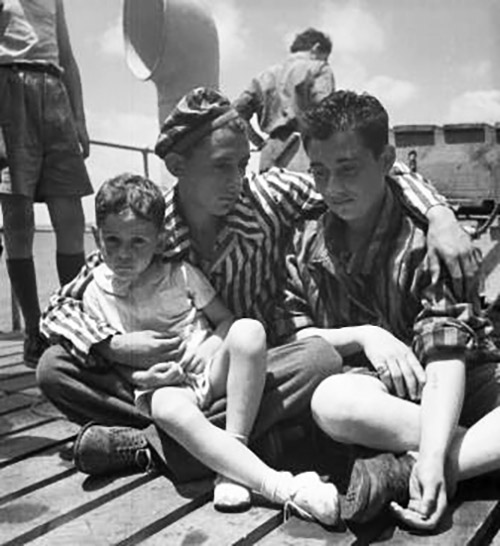
In honor of International Holocaust Remembrance Day, which falls out on January 27, let’s study the history of the Aliyah Bet, the code name for the illegal operation of refugee ships before, during and after the Holocaust.
Throughout the dark period enshrouding the Holocaust, refugee ships were used to help Jews escape the Nazis. This operation continued after the war, as ships transported Holocaust survivors to British Mandate Palestine in violation of the infamous White Paper, which Britain had imposed in 1939 to impede Jewish immigration.
Like most important episodes leading up to the country’s establishment, streets in Ashdod, Kiryat Gat, Ashkelon, Netanya, Dimona, Lod, Ramla and Zichron Yaakov were named in honor of the most famous ship, the Exodus 1947. Likewise, streets were named after other refugee ships, such as Pancho Street in Netanya, and streets across the country were named Aliyah Bet.
Over 60,000 illegal immigrants were snuck into Palestine on refugee ships, but many of the rescue efforts were unsuccessful. Let’s focus on three examples, which reflect activities prior to, during and following World War II.
The St. Louis
In May 1939, 937 Jewish refugees left Hamburg, Germany, en route to Cuba. All of the passengers had landing certificates granting them entry into the country, but when the St. Louis arrived in Havana, Cuba’s president refused to honor the documents.
After leaving Havana, the ship sailed so close to the Florida coast that the passengers could see the lights of Miami. The United States, and then Canada, turned down the captain’s many pleas for humanitarian assistance and prohibited the ship from docking. The St. Louis returned to western Europe and within a few months, the Germans overran western Europe. Over 250 of the passengers were killed by the Nazi death machine.
The Struma
In December 1941, 767 Jews boarded the Struma in Romania, with plans to travel to Turkey, apply for visas to Palestine, and then continue to Palestine. When the Struma arrived in Istanbul, the passengers were informed that they would neither receive visas to enter Palestine nor be permitted to enter Turkey.
The unsafe and overcrowded ship was confined to Istanbul’s harbor for over two months, as the British would not consent to the Struma’s continued journey to Palestine. On February 23, 1942, the Turkish police towed the Struma out to sea and abandoned it. The very next day, it sank and all but one of the passengers were killed.
The Exodus 1947
The Exodus 1947 is the most famous of all refugee ships, thanks in part to Leon Uris’ bestselling historical novel, which later became a hit movie. In July 1947, 4,500 Holocaust survivors from displaced persons camps boarded the ship in France and attempted to sail to Palestine. British war ships intercepted the vessel and a battle ensued between naval forces and the ship’s passengers. A crew member and two passengers were killed, and dozens more suffered injuries.
Attempting to discourage similar future illegal activity, British forces transferred the passengers to three navy transports, which returned to Europe. When the ships landed in France, the passengers refused to disembark, and the French authorities similarly refused to remove the refugees. Realizing their public relations gaffe, British authorities decided to wait out the passengers, whom they hoped would eventually voluntarily leave the ship. The passengers responded by declaring a hunger strike, which lasted 24 days and made front-page headlines worldwide. Mounting public protests across the globe compelled British authorities to find a solution. Exacerbating their blunders, the British government transported the refugees to Hamburg, where they were cruelly detained in British camps, causing international outrage.
This unfortunate incident had a silver lining, as it played a significant role in swaying global policy makers to adopt the U.N. Partition Plan a few months later on November 29, 1947, which led to the creation of the State of Israel in 1948.
Gedaliah Borvick is the founder of My Israel Home ( www.myisraelhome.com ), a real estate agency focused on helping people from abroad buy and sell homes in Israel. To sign up for his monthly market updates, contact him at [email protected].










